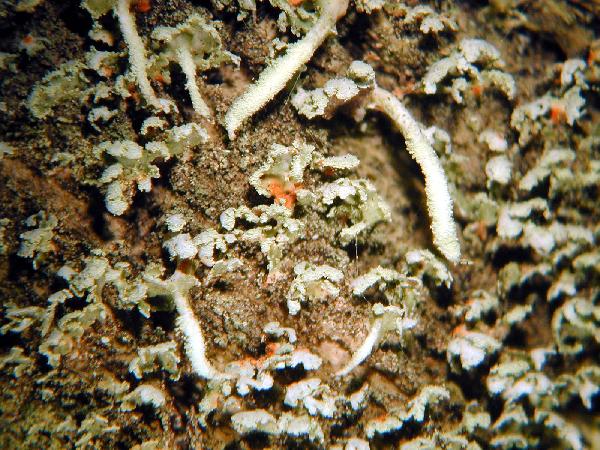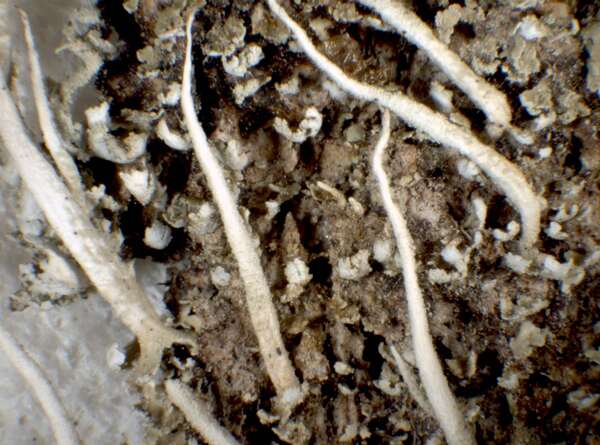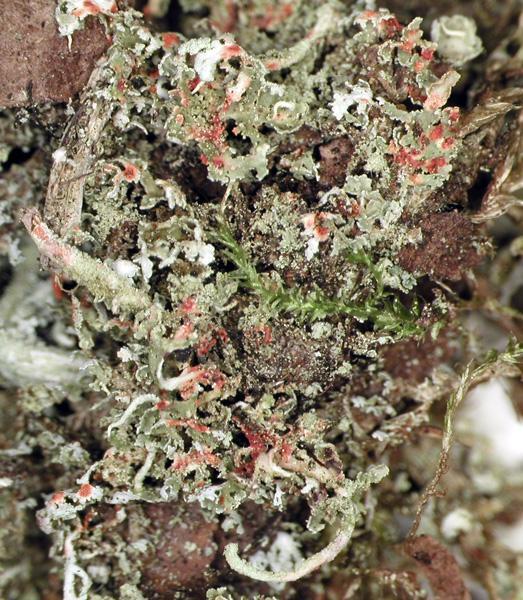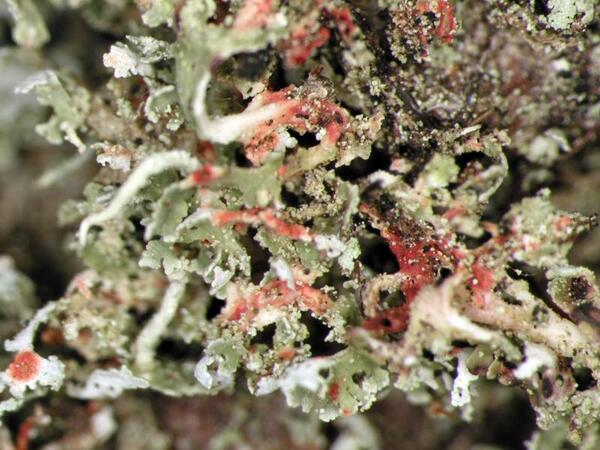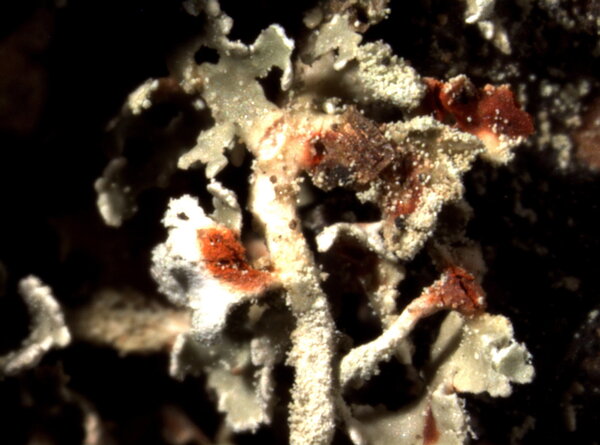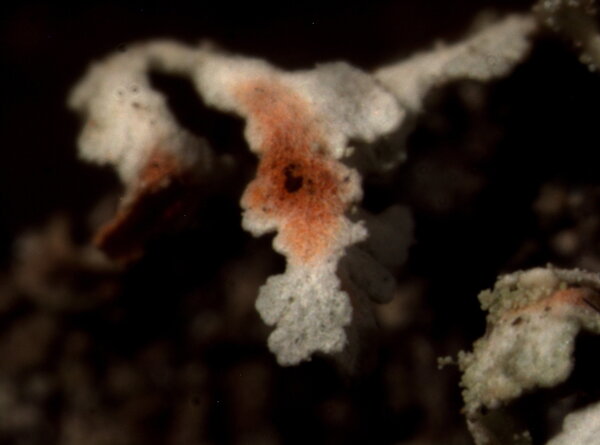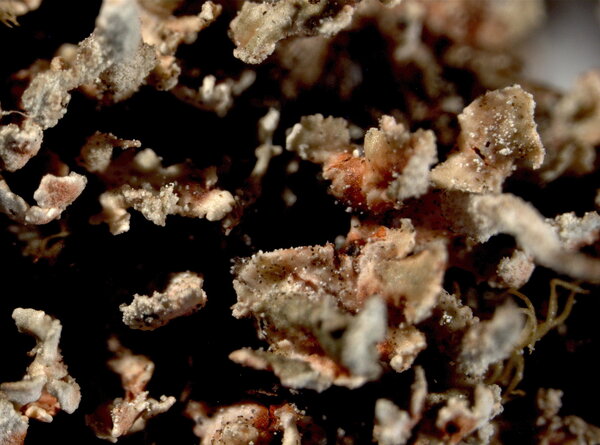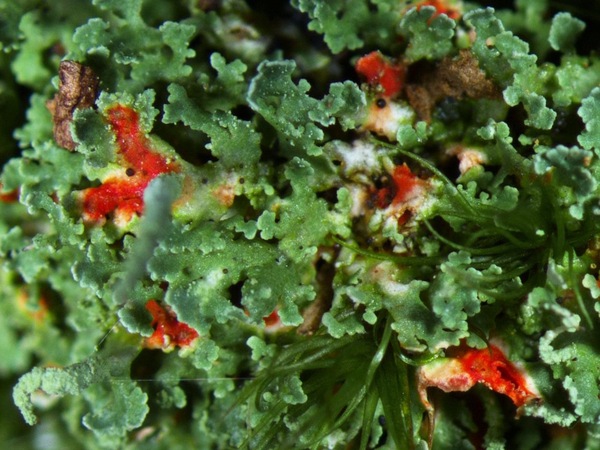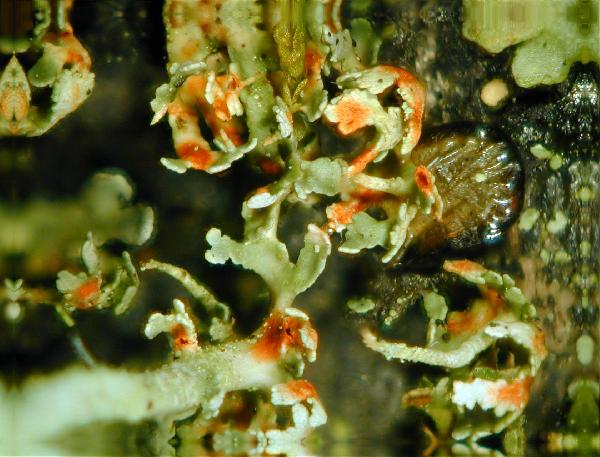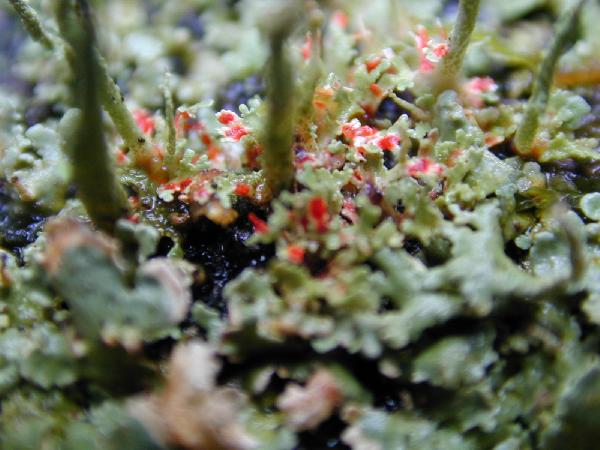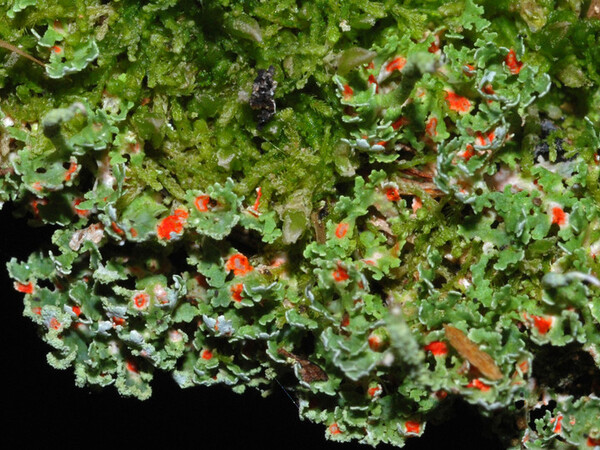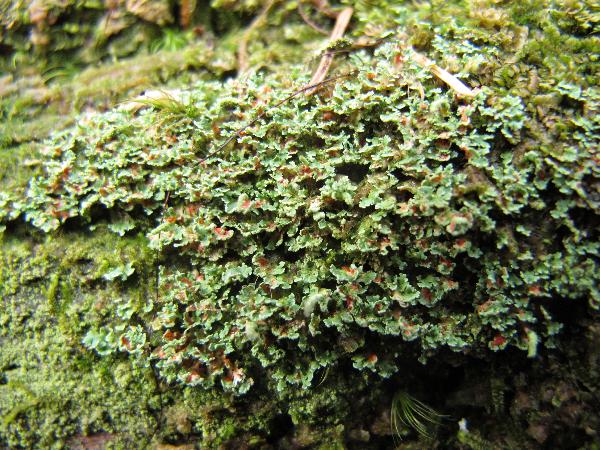Cladonia norvegica Tønsberg & Holien
Nord. J. Bot., 4: 79, 1984.
Synonyms:
Description: Primary thallus squamulose, the squamules usually persisting, small, 2-4 mm wide, incised or narrowly lobed, green above, white beneath, often with bright red spots caused by mite infections, sometimes sorediate along margins and on the lower side. Podetia bacilliform, slender, hollow inside, 1.5-2(-3) cm tall, usually cupless and pointed, rarely with very narrow cups in fertile specimens, pale green, grey-green or whitish, sometimes with red spots at base, the surface partly corticate and occasionally squamulose in basal parts, otherwise farinose-sorediate, the soredia 20-50 μm in diam. Apothecia rather rare, ochraceous or pinkish brown, subspherical, terminal. Pycnidia developing at tips of podetia, with a colourless jelly. Conidia hyaline, curved. Photobiont chlorococcoid. Spot tests: K-, C-, KC-, P-, UV- or UV+ pale white. Chemistry: barbatic and 4-O-demethylbarbatic acids; rhodocladonic acid in the red spots on primary squamules and podetia (not in the apothecia!).
Growth form: Fruticose
Photobiont: green algae other than Trentepohlia
Reproductive strategy: mainly asexual, by soredia, or soredia-like structures (e.g. blastidia)
Most common in areas with a humid-warm climate (e.g. most of Tyrrenian Italy)
Commonnes-rarity: (info)
Alpine belt: absent
Subalpine belt: extremely rare
Montane belt: very rare
Dry submediterranean belt: absent
Humid submediterranean belt: absent
Padanian area: absent
pH of the substrata:
1 2 3 4 5
Solar irradiation:
1 2 3 4 5
Aridity:
1 2 3 4 5
Eutrophication:
1 2 3 4 5
Poleotolerance:
0 1 2 3
Altitudinal distribution:
1 2 3 4 5 6
Rarity
absent
extremely rare
very rare
rare
rather rare
rather common
common
very common
extremely common
Loading data...
Occurrence data
Predictive map
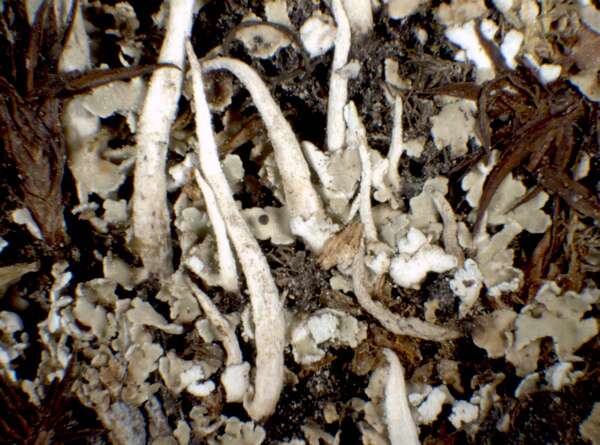
P.L. Nimis; Owner: Department of Life Sciences, University of Trieste
Herbarium: TSB (9170)
2001/12/04
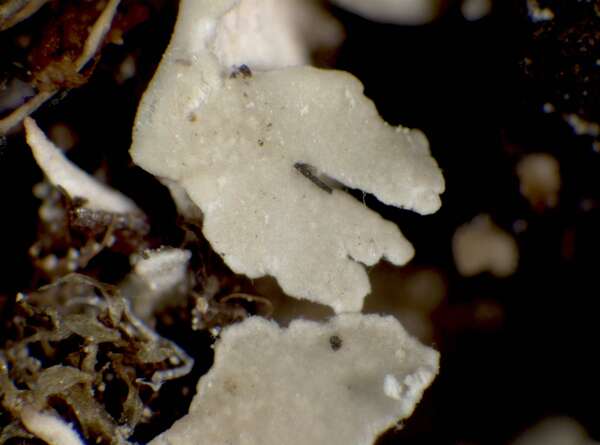
P.L. Nimis; Owner: Department of Life Sciences, University of Trieste
Herbarium: TSB (9170)
2001/12/04
detail of primary squamule
Growth form: Fruticose
Photobiont: green algae other than Trentepohlia
Reproductive strategy: mainly asexual, by soredia, or soredia-like structures (e.g. blastidia)
Most common in areas with a humid-warm climate (e.g. most of Tyrrenian Italy)
Commonnes-rarity: (info)
Alpine belt: absent
Subalpine belt: extremely rare
Montane belt: very rare
Dry submediterranean belt: absent
Humid submediterranean belt: absent
Padanian area: absent
pH of the substrata:
| 1 | 2 | 3 | 4 | 5 |
Solar irradiation:
| 1 | 2 | 3 | 4 | 5 |
Aridity:
| 1 | 2 | 3 | 4 | 5 |
Eutrophication:
| 1 | 2 | 3 | 4 | 5 |
Poleotolerance:
| 0 | 1 | 2 | 3 |
Altitudinal distribution:
| 1 | 2 | 3 | 4 | 5 | 6 |
Rarity
absent
extremely rare
very rare
rare
rather rare
rather common
common
very common
extremely common
Loading data...
Occurrence data
Predictive map

P.L. Nimis; Owner: Department of Life Sciences, University of Trieste
Herbarium: TSB (9170)
2001/12/04



